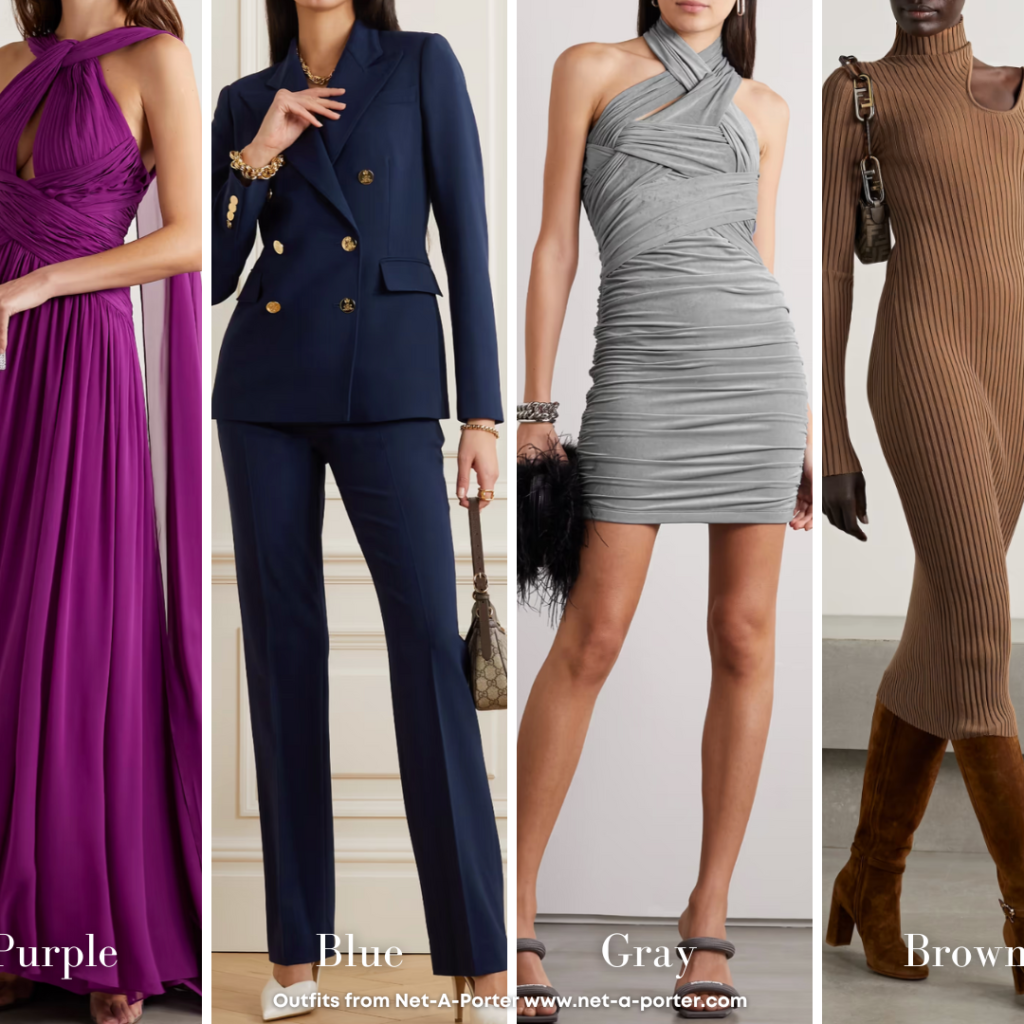Welcome to the vibrant world of fashion, where the colors you choose can express your personality, elevate your mood, and transform your overall look! Whether you’re getting ready for a casual brunch or a glamorous night out, the right color combinations can make all the difference. So, let’s dive into the art of color coordination and discover how to make your outfits pop!
The Color Wheel: Your Fashion Compass

First things first: let’s familiarize ourselves with the color wheel! Think of it as your personal stylist, guiding you through the myriads of color choices. The color wheel isn’t just a tool; it’s a foundation for understanding how colors work together in harmony or contrast.
Fun bit: Grab a piece of paper or open a note on your phone. Draw a simple color wheel with the primary colors (red, blue, yellow) in the center and secondary colors (green, orange, purple) surrounding them. Now, let’s explore some color relationships!
Complementary Colors: Bold Statements

Complementary colors are opposite each other on the wheel. When paired, they create a striking contrast that grabs attention. For instance, think of a fiery orange top with deep blue jeans. Talk about a head-turner!
Tip: When using complementary colors, balance is key. If one color is bold, consider toning down the other to avoid overwhelming your look. A bright orange dress might pair beautifully with a subtle navy jacket, ensuring that neither color overshadows the other.
Analogous Colors: Smooth Sailing
Analogous colors sit next to each other on the color wheel, offering a harmonious vibe. Picture a lovely gradient of greens and blues. This combo is perfect for creating a soft, cohesive look that feels effortless. Try putting together an outfit with three analogous colors. Maybe a mint green top, teal pants, and a dark green scarf? Snap a picture and see how the colors blend! It’s a fantastic way to see how subtle differences in shades can create a visually pleasing ensemble.
Triadic Colors: Playful Energy
Triadic colors consist of three evenly spaced colors on the wheel, like red, yellow, and blue. This scheme can add vibrancy and energy to your outfit. Imagine a bright yellow top paired with a rich blue skirt and red shoes—perfect for making a statement!
Challenge: Create a triadic outfit using items in your wardrobe! Perhaps a yellow dress, red heels, and a blue bag? Share your creation with a friend for feedback. It’s a fun way to see how bold color choices can come together beautifully.
Read Also: 5 Weird Facts About the World’s Smallest Organism: Tardigrades
Finding Your Perfect Palette: Skin Tones Matter
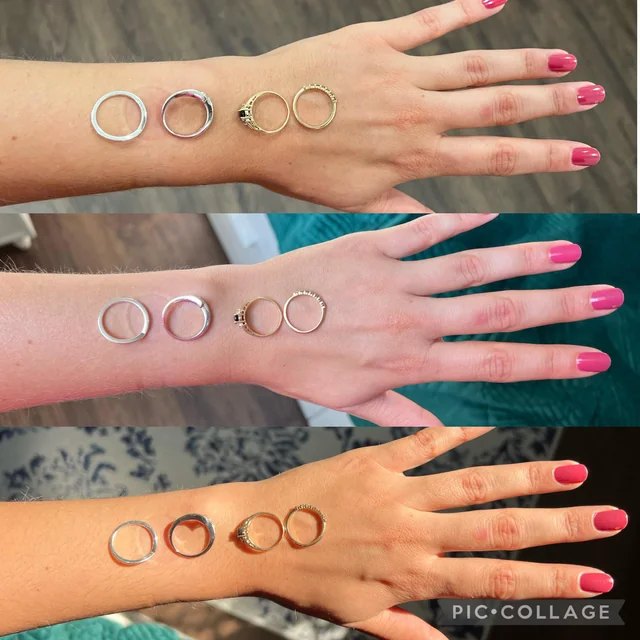
Your skin tone is a game-changer when it comes to color selection. Understanding whether you have warm, cool, or neutral undertones can significantly impact your wardrobe choices. Let’s find out which shades work best for you!
Warm Undertones: Earthy and Inviting
If your skin has yellow, peach, or golden hues, you likely have warm undertones. Colors like earthy browns, warm reds, and sunny yellows will complement your natural glow. Think of colors found in nature, like autumn leaves or sunflowers. Check your veins, if they appear greenish, you’re in the warm category. You can also hold a piece of gold jewelry next to your skin; if it looks better than silver, you’re likely warm-toned.
Cool Undertones: Jewel Tones to the Rescue
If your skin has pink, red, or blue hues, you’re in the cool undertone category. Jewel tones like emerald green, sapphire blue, and rich purples are your best friends. These colors can make your complexion appear brighter and more vibrant. Try on a piece in a jewel tone and notice how it brightens your complexion! Take a selfie and compare it with neutrals, you might be surprised at how much the right color can enhance your features.
Neutral Undertones: Versatile and Chic
If you have a mix of warm and cool tones, consider yourself lucky! You can rock a wide range of colors, from blush pinks to muted grays. This versatility allows you to experiment more freely with fashion.
Challenge: Test out a bold color you wouldn’t normally wear. Perhaps a bright coral or a deep teal? You might discover a new favorite that surprises you!
Building a Versatile Wardrobe
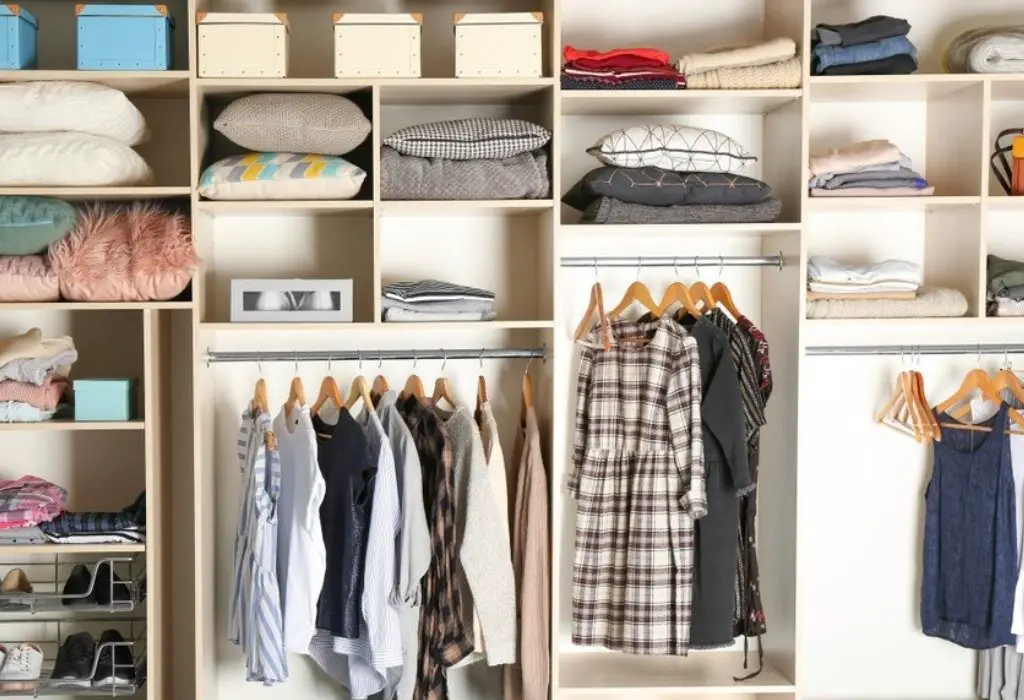
Now that you understand color basics and your skin tone, it’s time to build a wardrobe that reflects your unique style! Here’s how to create a versatile and dynamic wardrobe that feels fresh and exciting.
Start with Neutrals: Your Fashion Foundation
Neutrals are the unsung heroes of any wardrobe. Think black, white, gray, and beige—they’re perfect for layering and pairing with brighter colors. A well-curated collection of neutral pieces provides the foundation for countless outfits.
Interactive Tip: Lay out your neutrals and see how many different outfits you can create! Pair a white tee with various bottoms, or try layering a beige cardigan over different tops. This exercise will help you understand the versatility of your wardrobe staples.
Read Also: Keeping the Flame Alive: Date Night Ideas for Every Stage of Your Relationship
Add a Splash of Color: Statement Pieces
Once you have a solid base of neutrals, it’s time to add some colorful statement pieces. Whether it’s a vibrant jacket or a pair of bold shoes, these items will bring life to your outfits. Think of them as the accents that elevate your style.
Activity: Go shopping (or browse online) for a statement piece that excites you. Look for something that makes you say, “Wow, I have to have that!” It could be a bright yellow coat, a patterned dress, or even a funky pair of shoes.
Accessories: The Finishing Touch
Don’t underestimate the power of accessories! A colorful bag, bright jewelry, or a funky scarf can elevate any outfit. Accessories are the final touch that can tie your look together or add an unexpected twist.
Challenge: Create an outfit and then choose accessories that either match or complement the colors. Take a picture to see how the accessories change the look! You might find that a simple outfit becomes extraordinary with the right accessories.
Mastering Color Combinations

With all this knowledge under your belt, it’s time to put it into practice! Here are some tried-and-true combinations to help you get started. These combinations are classic yet versatile, allowing for creativity and personal expression.
Monochromatic Looks: The Chic Option
Wearing different shades of the same color creates a sophisticated, monochromatic look. For example, pair a light blue blouse with dark blue jeans and a navy blazer. This approach is perfect for elongating your silhouette and creating an effortlessly stylish appearance.
Interactive Moment: Try creating a monochromatic outfit using a single color family. Play with different shades and textures, like a light gray sweater with charcoal pants and silver accessories.
Complementary Combinations: Bold and Beautiful
As mentioned earlier, complementary colors create a striking visual effect. Think about pairing a rich purple dress with yellow accessories or a blue shirt with orange pants. Just remember to balance the intensity—if one color is bold, keep the other more subdued.
Challenge: Create a complementary outfit using pieces you already own. Perhaps a green top with red accents or a pink dress with teal shoes? Document the process and see how you feel in these striking combinations!
Analogous Pairings: The Harmonious Choice
This harmonious color scheme is easy to pull off. For instance, a light green top can look lovely with a dark green skirt and teal shoes. This approach gives your outfit a serene, cohesive vibe, making it perfect for casual settings or work environments.
Activity: Experiment with analogous colors in your wardrobe. Choose three colors next to each other on the color wheel and create an outfit. Snap a photo and see how they complement one another!
Read Also: The Art of Communication in Love: Speaking the Language of the Heart
Triadic Fun: The Bold Experimenter
For those who love to play with color, a triadic combination is a great option. Imagine wearing a red top with blue pants and a yellow scarf. The key is to balance the colors so that one doesn’t overpower the others. This technique can be a fantastic way to express your playful side!
Challenge: Use three colors from the color wheel to create a triadic outfit. Share your creation on social media and tag a friend to get their opinion!
Seasonal Color Trends: Stay Fresh and Stylish
Fashion is always evolving, and seasonal trends can influence color choices. Staying updated with these trends can help you look fresh and modern. Here’s a quick look at what to expect each season:
Spring/Summer: Light and Bright
- Pastels: Soft pinks, lilacs, and baby blues dominate the spring and summer months. These colors are reminiscent of blooming flowers and sunny skies.
- Bold Colors: Vibrant yellows, electric blues, and bright oranges make a statement during the warmer months. Think beach days and sunshine!
Fall/Winter: Rich and Warm
- Earth Tones: As the leaves change, expect to see rich browns, burnt oranges, and deep greens in your wardrobe. These colors add warmth to your outfits and evoke feelings of coziness.
- Jewel Tones: Emeralds, sapphires, and ruby reds shine in the colder months, bringing a touch of elegance to your winter wear.
Interactive Moment: Check your closet for seasonal pieces. Are there colors you can swap out or mix in to stay on-trend? Create a mini capsule wardrobe for the upcoming season!
Putting It All Together: Outfits to Inspire
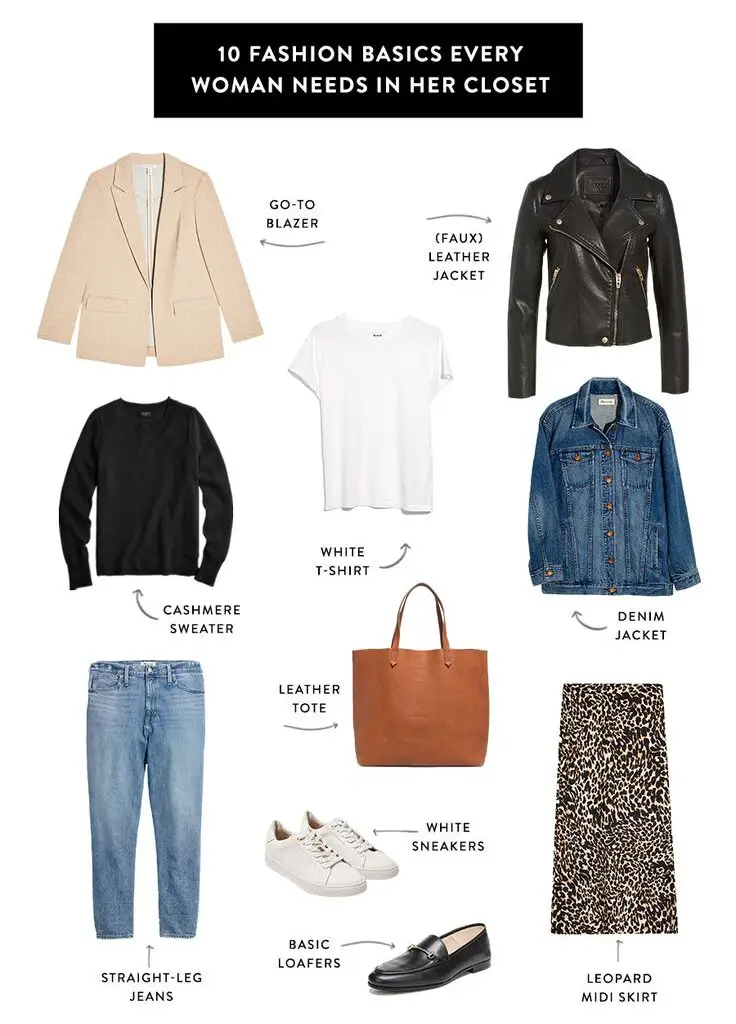
Let’s put everything we’ve discussed into action! Here are a few outfit ideas to spark your creativity. These looks are designed to inspire you, but don’t hesitate to adapt them to fit your personal style.
Casual Chic
- Top: Light gray t-shirt
- Bottom: Olive green pants
- Accessories: Mustard yellow scarf and white sneakers
This outfit strikes the perfect balance between casual and put-together, making it ideal for brunch or a casual outing.
Office Ready
- Dress: Navy blue sheath dress
- Layer: Soft blush cardigan
- Shoes: Classic nude pumps
This look is professional yet stylish, perfect for a day at the office. The blush cardigan softens the navy dress, creating a polished appearance.
Read Also: Celebrities Who Don’t Believe in God – Believing in Believers
Night Out
- Top: Bright red blouse
- Bottom: Black high-waisted jeans
- Accessories: Gold statement earrings and a black clutch
This ensemble is perfect for a night out on the town. The red blouse adds a pop of color, while the black jeans keep it chic and trendy.
Color Psychology: The Mood Behind the Hue
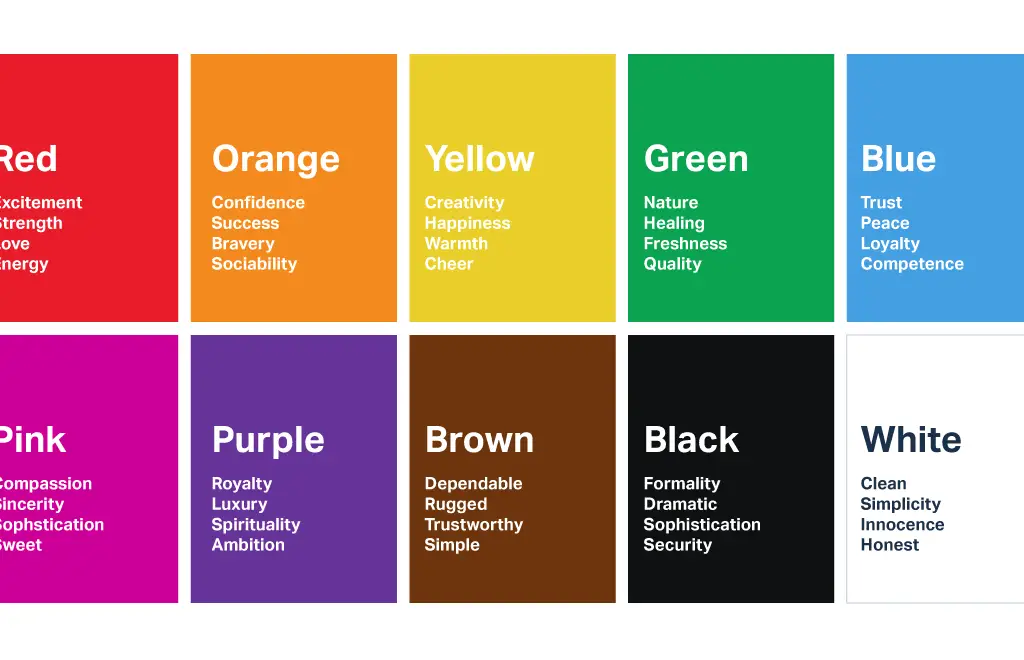
Understanding the psychology behind colors can also enhance your fashion choices. Different colors evoke different feelings and emotions, which can be powerful in expressing who you are.
Red: Passionate and Energetic
Red is bold and attention-grabbing. It signifies passion and energy. Wearing red can boost your confidence and make you feel empowered. Think of it as your “go-getter” color!
Blue: Calm and Trustworthy
Blue is associated with tranquility and trust. Wearing shades of blue can convey a sense of calm and professionalism. It’s perfect for job interviews or important meetings.
Yellow: Cheerful and Bright
Yellow is the color of happiness and optimism. It’s uplifting and can instantly brighten your mood. Wearing yellow can make you feel cheerful and open to new experiences.
Green: Balanced and Refreshing
Green represents balance and harmony. It’s a great color for expressing growth and renewal. Incorporating green into your wardrobe can create a refreshing vibe.
Black: Elegant and Powerful
Black is timeless and versatile. It conveys sophistication and power. A little black dress or a tailored black suit can exude confidence and elegance.
Read Also: Opt-In or Opt-Out? Exploring the Medical Consequences of Organ Donation Policies!
Conclusion: Unleash Your Colorful Potential
Navigating the world of color coordination doesn’t have to be intimidating. With a little knowledge about color theory, an understanding of your skin tone, and a willingness to experiment, you can create stunning outfits that express your personality. Remember, fashion is about fun—don’t be afraid to mix, match, and play with colors!
FAQs
- What colors should I avoid if I have warm undertones?
Stay away from overly cool colors, like icy blues and greens, which may wash you out. - How can I incorporate more color into my wardrobe?
Start with statement accessories or a bold piece of clothing, then build around it with neutrals. - Are there colors that look good on everyone?
Neutrals like black, white, and navy tend to be universally flattering, but individual skin tones will influence how other colors look. - Can I mix patterns and colors?
Absolutely! Just make sure one pattern is more dominant, and find colors within the patterns that match or complement each other. - How often should I update my wardrobe for seasonal trends?
It’s good to refresh your wardrobe at least twice a year, but consider adding a few trendy pieces each season to keep things exciting.
